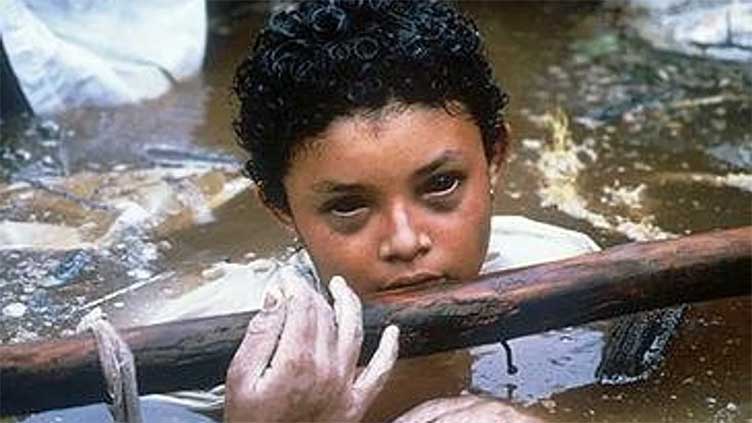Photographer behind iconic image of trapped girl explains why he didn't save her

Entertainment
It was ‘impossible’ for him to save her
(Web Desk) - A photographer who captured one of the most harrowing images of the 20th century has justified his decision to take the picture.
The heartbreaking image shows 13-year-old Omayra Sánchez Garzón half-buried in muddy water following a devastating volcanic eruption in Colombia.
More than 24,000 people were killed after the Nevado del Ruiz volcano spewed out mudflows, lava and debris, engulfing the town of Armero, on 13 November, 1985.
That night, a violent stream of lahar (rocky volcanic debris) tore into Omayra’s home, trapping her under heavy rubble.
The 13-year-old’s brother and mother survived the tragedy, while her father and aunt died on the spot, The Sunreports.
Rescue workers attempted to pull Omayra from the wreckage but the situation was impossible: her legs were allegedly caught under a door made of bricks and her dead aunt’s arms were clasped tightly around her legs and feet.
Emergency responders explained at the time that they couldn’t extract her from the rubble without completely shattering her legs.
And, they said, they didn’t have the resources to provide her with life-saving care if they were to amputate her limbs.
Eventually, after numerous failed attempts to save her, rescuers concluded that the kindest course of action would be to keep Omayra as comfortable as possible.
A tire was placed around her body to keep her afloat and she was fed sweet food and drinks but, as the hours wore on, her condition deteriorated.
After around 60 hours trapped in the hellish pool, the brave child passed away.
Omayra’s plight was well documented at the time, with journalists, TV crews and Red Cross workers all on the scene.
However, the image that most struck a chord with the public was captured by French photographer Frank Fournier.
The picture shows Omayra staring boldly at the camera, her eyes so bloodshot they look black, and her hands whitened by their days-long submersion.
The photo went on to win the World Press Photo of the Year in 1986, but it also prompted an outcry among swathes of the public.
They voiced their horror that whilst technology could be used to transmit a little girl’s suffering across the globe in an instant, it couldn’t be used to save her life.
Fournier himself also came under fire, with critics accusing him of prioritising his career over Omayra’s wellbeing.
However, speaking to the BBCin 2005, the photojournalist explained that it was “impossible” for him to save her.
Recalling the moment he met the 13-year old, he told the broadcaster: “When I took the pictures I felt totally powerless in front of this little girl, who was facing death with courage and dignity. She could sense that her life was going.
“I felt that the only thing I could do was to report properly on the courage and the suffering and the dignity of the little girl and hope that it would mobilise people to help the ones that had been rescued and had been saved."


